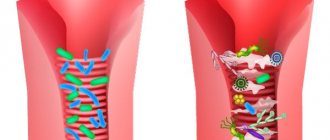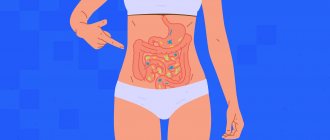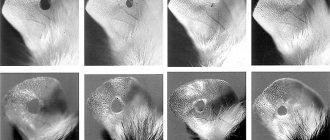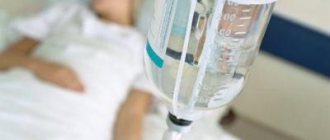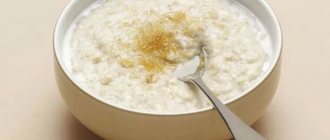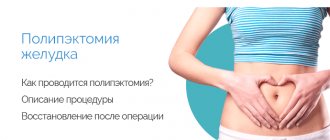Then what do you recommend? Should I go to the doctor right away?
Yes, he must assess all the risks. The same antidiarrheal drugs should be taken in an amicable way only after the recommendation of a doctor. Bad signs indicating serious damage to the intestines are the following symptoms that accompany diarrhea: increased body temperature, blood in the stool, false urge to defecate, swelling of the legs, an increase in the size of the abdomen. If you develop diarrhea against the background of any stress - that is, you have been diagnosed with irritable bowel syndrome - then you also need to see a doctor, albeit as planned: Covid is also a very big stress for the body.
Causes and consequences of diarrhea
Diarrhea in children and adults can be caused by many reasons. Here are common risk factors that trigger bouts of diarrhea:
- disturbances of intestinal motility,
- accumulation of toxins in the intestines due to infectious diseases of the gastrointestinal tract,
- dysbacteriosis due to taking antibiotics,
- fermentopathy or enzyme deficiency,
- autoimmune pathologies,
- individual food intolerance,
- unusual food and acclimatization,
- poisoning,
- binge eating.
With diarrhea, stool becomes liquid or acquires a mushy consistency, a foul odor, and the frequency of stool increases. This can lead to serious consequences:
- microflora disturbance,
- dehydration,
- lowering blood pressure,
- dizziness,
- severe weakness.
Diarrhea is especially dangerous for children because they become dehydrated more quickly than adults. Correct treatment will help eliminate the problem of frequent bowel movements and restore the body after diarrhea, so you should not neglect contacting a specialist.
What should the diet be like after coronavirus?
If you have had an easy infection and do not have any complications from the gastrointestinal tract, then you can be advised to follow the “Mediterranean diet”. By the way, it is suitable for everyone, since it is the most complete and, according to research, prolongs life. It does not require any special restrictions and is quite simple: half the plate - vegetables and fruits in any form, a quarter - cereals (pasta, cereals and bread), a quarter - proteins (chicken, fish, eggs, rabbit). Sweets and red meat – no more than 2 times a week. Sausages, salami and pates – the rarer the better.
If there are still complications from the gastrointestinal tract after coronavirus, then you are advised to take a gentle diet during diarrhea: eat less fresh vegetables and fruits, exclude dairy products, as well as fried, smoked and salty foods. It is very important to note that gentle nutrition is always temporary; in modern gastroenterology, lifelong diets are extremely rare, with the possible exception of celiac disease.
Intestinal disorder: how to choose a medicine
The best treatment is the prevention of acute intestinal infections. However, despite all the warnings, almost every person has encountered an intestinal disorder, and there are remedies for this in every home medicine cabinet. So let’s figure out how the pills we are used to work, so that we can take the right medicine at the “X” hour.
Information: during illness, the main functions of the intestine are inhibited: food digestion and peristalsis, the production of secretions from the digestive glands and intestinal juice are disrupted. The most common manifestation of intestinal disorder is a violation of the water-electrolyte balance in the intestines - diarrhea.
Now imagine that your intestines are a pipe that leads to the faucet in your kitchen where the problems started. Normal slow and wave-like bowel movements accelerate, water does not have time to be absorbed by the walls, and loose stools appear. This condition is comparable to a leaking faucet. We urgently need to fix the problem before the apartment is flooded.
We provide first aid: activated carbon and other enterosorbents
In case of intestinal disorder, the first thing to use is enterosorbents - activated carbon, which is found in almost every first aid kit, and more modern drugs. Medicines absorb and bind toxic substances that enter the gastrointestinal tract and cause the problem.
What happens to the immune system during diarrhea?
The intestine is an important organ of the immune system. It contains lymphoid tissue that reproduces immunocompetent cells. These cells are capable of producing immunoglobulins in response to foreign antigens that have entered the intestine. Immunoglobulins are protective protein molecules that bind pathogens and prevent them from harming our body. The effectiveness of the secreted immunoglobulins depends on the time they remain in the intestine: the longer, the more effective. Along with loose stools, the loss of immunoglobulins increases, and their quantity may become insufficient to suppress the infection.
Up to contents
Diarrhea and pathogens
Own microflora protects the human intestine from colonization by pathogenic microorganisms1. Representatives of lacto- and bifidoflora prevent the establishment of pathogens and compete with them for nutrients and “living space”. In addition, normal microflora produces active substances that slow down the growth of harmful microbes2. During diarrhea, the rate at which food passes through the intestines increases, and beneficial bacteria are lost along with the intestinal contents3. Pathogenic flora begins to grow, support the infectious process and increase inflammation in the intestines.
Up to contents
Disorders of intestinal microbiocenosis in children and its correction
The most important role in the life of the human body is played by the intestinal microbiocenosis - the microecological system of the body, which developed in the process of phylogenetic development in the human digestive canal. The importance of microbial flora for a healthy person was first noticed in 1907 by I. I. Mechnikov. The process of interaction between microorganisms living in the intestines and the mucous membrane itself is quite complex and many monographs and scientific papers are devoted to its study.
The entire intestinal microflora can be divided into three groups: the main flora, among which the most interesting are bifidobacteria (Bifidobacterium bifidum, Bifidobacterium brevis, Bifidobacterium longum, Bifidobacterium adolescentis, etc.) and lactobacilli (Lactobacillus acidophilus, Lactobacillus fermentum, Lactobacillus brevis, Lactobacillus lactis, etc. .), accompanying flora, represented mainly by E. coli with typical biological properties and enterococci (Enterococcus fecalis, Enterococcus faecium), and residual flora, which is represented by opportunistic bacteria of the enterobacteria family: Klebsiella, Citrobacter, Proteus, etc., staphylococci (Staphylococcus epidermidis, Staphylococcus saprophyticus) and yeast-like fungi.
One of the main functions of normal microflora is protective, since human symbiont bacteria have pronounced antagonistic activity towards pathogenic and opportunistic microorganisms. For example, bifidobacteria form lactic, acetic, formic and succinic acids during their life, which reduces the pH of the intestinal environment and prevents its colonization by foreign microorganisms that have come here from the outside. During the fermentation of lactic acid, lactobacilli form antibiotic substances - lactolin, lactocidin, acidophilus. Full-fledged E. coli is capable of synthesizing colicins and microcins - specific proteins with antibacterial activity. Thus, representatives of the main and accompanying intestinal microflora inhibit the growth and reproduction of putrefactive and pathogenic microorganisms - E. coli with atypical biological properties, Klebsiella, Proteus, some types of Salmonella and Shigella, Staphylococcus aureus.
The presence of microbial associations in the intestine determines the state of the synthetic function of liver cells through participation in the hepatic-intestinal circulation of the most important components of bile - bile salts, cholesterol and bile pigments.
The participation of normal intestinal microflora in the metabolic processes of the human body is determined, on the one hand, by the utilization of undigested food compounds by intestinal microorganisms and the inactivation of biologically active substances released with digestive juices, and on the other hand, by the synthesis by representatives of the normal intestinal flora of B vitamins, vitamin K, nicotinic and folic acid, various biologically active compounds: estrogens, promazine, morphine, colchicine, diestilbestrene, digoxin, etc.
Another of the most important functions of the microflora of the human body is participation in the formation of the immunobiological reactivity of the macroorganism. It has been shown that as a result of antigenic stimulation of the immune system by autoflora, a common pool of immunoglobulins is created and maintained in the human body.
It is known that intestinal enterocytes, whose main function is to absorb nutrients from the intestinal lumen, do not always receive adequate nutrition from the body itself, through the basement membrane to which they are fixed. This is explained by the fact that infusion processes in intestinal epithelial cells seem to proceed in only one direction - from the top of the enterocytes to the basement membrane, and not vice versa. So the enterocytes have to “get food” for themselves also from the intestinal lumen. This nutritional substance for epithelial cells, called butyrate, consists of various waste products of the symbiont flora living in the intestinal lumen, which is a mixture of short-chain fatty and volatile acids, monosaccharides and lipids.
When the symbiont flora is suppressed by opportunistic and pathogenic bacteria, butyrate production decreases or stops altogether, enterocytes in a state of nutritional deficiency atrophy and digestive processes are disrupted. There are works describing mechanical damage to intestinal villi under such conditions by opportunistic Escherichia coli. Escherichia literally “gnaws” on enterocytes weakened due to nutritional deficiency.
Thus, normal microflora with its specific functions - protective, metabolic and immuno-inducing, nutritional - determines the microbial ecology of the digestive tract and participates in maintaining the homeostasis of the macroorganism. Violation of any of the functions leads to disruption of various types of metabolism, the occurrence of micronutrient deficiency: vitamins, microelements, minerals in the human body, and a decrease in its immune status.
Violations of the composition and quantitative ratio in the intestinal microbiocenosis arise from a variety of reasons: the nature of nutrition, age, antibacterial, hormonal or radiation therapy, the presence of chronic diseases of the gastrointestinal tract, altered immunobiological reactivity of the body and environmental conditions and occur long before clinical manifestations - they serve as a harbinger of deviations in the clinical and physiological status of the body. These changes in the normal microflora are called dysbiosis or dysbiosis, which over time manifests itself with clinical local symptoms, and then general disorders that aggravate the course of various human diseases and complicate their treatment. The predominance of growth of any representatives of the intestinal microbial flora, which occurs due to the circumstances listed above, is called bacterial overgrowth syndrome (SIBO) and is one of the manifestations of dysbiosis. Therefore, along with treating a person for a particular disease, it is necessary to improve his intestines.
To characterize intestinal dysbiosis in different years, various classifications have been proposed, taking into account the type of microbial flora, type of disorder, severity and clinical forms, etc., but none of the currently known classifications can fully satisfy the doctor when solving practical problems of normalization and correction of intestinal microbiocenosis and rationally construct the treatment and prevention of dysbiosis in patients. We used the classification by S. D. Mitrokhin (1998), which allows us to characterize the severity of colon dysbiosis from the standpoint of optimizing modern approaches to the treatment and prevention of dysbiosis.
Microecological classification of the severity of intestinal dysbiosis (S. D. Mitrokhin, 1998)
I degree of severity - the total number of E. coli is increased or decreased. There are no E. coli with atypical biological properties. The number of bifidobacteria and lactobacilli was not changed. Changes in the general indicators of the microbial metabolite passport of feces are characteristic only in relation to the pool of volatile fatty acids, the content of phenylpropionic acid, skatole and methylamine. The total content of volatile fatty acids in patients with the first degree of severity of dysbiosis may be less or greater than that in healthy individuals. Skatole content will be reduced. On the contrary, the content of phenylacetic acid and methylamine will be increased. Changes in the specific gravity of oxaloacetic acid in the profile of other carboxylic acids (DCA) will be noted. Dysbacteriosis is latent, compensated, intestinal dysfunctions are not recorded.
II degree of severity - the number of bifidobacteria and lactobacilli is slightly reduced. Quantitative and qualitative (appearance of forms with atypical biological properties) changes in E. coli are observed. Opportunistic intestinal microorganisms are sown in moderate quantities. There are changes in both general and specific indicators of the microbial metabolite passport of feces. Which is reflected in a decrease in the amount of excretion of phenolic compounds in feces: p-cresol and indole. The amount of skatole in feces decreases tenfold. The opposite picture is observed for phenylpropionic acid, the amount of which is an order of magnitude higher than that in healthy individuals. The profile of phenolic compounds (PCs) also changes: the specific gravity of indole increases by more than 2 times, the specific gravity of p-cresol has decreased slightly, and the specific gravity of skatole has decreased by more than ten times. In general, fecal excretion of carbonic and aromatic amino acids, phenolic and indole compounds (with the exception of phenylalanine) is reduced in grade II dysbiosis. Excretion of histamine and serotonin in feces decreases. The amine profile has been changed: the specific gravity of histamine and serotonin is lower, the specific gravity of the representative of simple amines, methylamine, is higher. Dysbacteriosis is local (local), subcompensated, intestinal dysfunctions, as a rule, are not observed.
III degree of severity - a significant decrease in the number of bifidobacteria (105–106) combined with a decrease in the number of lactobacilli and a sharp change in the typical properties of Escherichia coli (a significant predominance of hemolytic, lactose-negative forms). A significant increase in the number of opportunistic bacteria with pathogenic properties (hemolytic forms) and pathogenic yeast-like fungi (genus Candida, Geotrichum, etc.). Characterized by even more pronounced changes in both general and specific indicators of the microbial metabolite passport of feces. The amount of excretion with feces of phenolic compounds: p-cresol and indole is reduced. Skatole is practically absent in feces. On the contrary, the content of phenylpropionic acid in feces increases sharply. The PS profile changes in such a way that the specific gravity of indole increases significantly and the specific gravity of p-cresol decreases significantly. The amount of amine excretion changes significantly: the content of histamine and serotonin in feces may be higher or lower compared to the norm (depending on the nosological form of the underlying disease). The content of carboxylic acids in the feces of patients with stage III dysbiosis changes as follows: the pool of volatile fatty acids sharply decreases, oxaloacetic acid is practically not detected, and excretion of alpha-ketoglutaric acid with feces increases significantly. Changed volatile fatty acid profile. In case of stool disorders such as diarrhea, the specific gravity of acetic acid is lower, the specific gravity of propionic and butyric acids, on the contrary, is increased; with constipation, the opposite picture is observed. There is a decrease or increase in the specific gravity of lactic acid and similar changes in the specific gravity of alpha-ketoglutaric acids in the DKK profile. Dysbacteriosis is local (local), decompensated, intestinal dysfunctions are usually observed.
IV degree of severity - a sharp decrease or absence of bifidobacteria, a significant decrease in the number of lactobacilli, a sharp decrease in the number or absence of E. coli with typical properties, a significant increase in the number of both obligate and facultative species (not normally found) of intestinal bacteria and yeast-like fungi with pathogenic properties . Pathogenic intestinal bacteria (Salmonella, Shigella, Yersinia) are detected. Qualitative changes in the microbial metabolite passport remain the same as in the third degree, but their quantitative characteristics are even more changed, characterized by a deep imbalance of the biochemical regulatory mechanisms of the microbial ecosystem, combined with a similar imbalance of the intestinal microbial infrastructure. Dysbacteriosis is widespread (with bacteremia), decompensated (with the threat of generalization of infection, sepsis or septicopyemia), pronounced intestinal dysfunctions are observed.
Doctors from all over the world have been treating dysbiosis for a long time. As a result of many years of painstaking search for the most effective measures and methods, a large number of medications and biologically active additives have now been formed, which to one degree or another affect the state of the microflora and are used to restore the disturbed balance of the intestinal eco-structure.
The wide variety of drugs on the Russian market, the need for a rational choice of therapeutic effects and their combinations convincingly indicate the need for some systematization and schematization of the treatment of intestinal dysbiosis, without excluding experience and creativity in the work of the attending physician and an individual approach to the correction and prevention of intestinal dysbiosis.
Currently, the following basic principles of combined correction of intestinal microecological imbalance have been developed:
- correction of the motor-secretory function of the gastrointestinal tract, including enzyme therapy, multivitamin therapy, prescription of antispasmodics, antidiarrheal, choleretic and drugs that stimulate regenerative processes;
- enterosorption and enteroprotection, which consists in the administration of enterosorbents that remove both pathogenic microorganisms and their metabolic products from the body;
- selective decontamination of pathogenic and conditionally pathogenic intestinal microflora, carried out on the basis of the administration of bacteriophages, intestinal antiseptics, phytoncides and antibacterial drugs;
- correction of normal intestinal microflora using various probiotics;
- functional nutrition, which consists of consuming fermented milk and other products containing bifidobacteria as an active ingredient (fruit and vegetable juices, chewing gum, ice cream, confectionery, salads, cheeses, sour cream, kefir, butter, cream, cottage cheese, desserts and etc.). Currently, bifidobacteria are included in more than 70 different food products.
The following points are also extremely important elements in the treatment and prevention of intestinal dysbiosis:
- sanitary and educational work with patients and their relatives about the role of microflora and the need for its correction;
- long-term cooperation between doctor and patient;
- adherence to dietary regimen and functional nutrition;
- the use of medicinal and non-medicinal methods of treatment and prevention of intestinal dysbiosis.
When constructing tactics for rational, individual treatment and prevention of intestinal dysbiosis, especially in children of different ages, in whom the processes of forming their own ecosystem continue until 10–12 years of age, the doctor needs to solve the following problems:
- normalization of intestinal function (the first principle of combination therapy);
- creating conditions conducive to more favorable development of the body’s own flora (autoflora) (the second principle of combination therapy);
- sanitation of the intestines from pathogenic and opportunistic flora (the third principle of combination therapy);
- long-term intermittent treatment (pulse therapy) for III-IV severity of dysbacteriosis for at least 6 months (the fourth principle of combination therapy);
- preservation and maintenance of intestinal microbial ecology (fifth principle of combination therapy).
To normalize intestinal function, agents are used and individually selected, taking into account dysfunctions of the colon and the characteristics of the action of drugs with the most likely effect on the cause of the existing intestinal dysfunction (constipation, diarrhea) and adsorbing properties, as well as enzymatic deficiency. Recently, much attention has been paid to the problems of dysbiosis, excessive bacterial growth caused by a variety of factors - disruption of the macro- and microecology of the intestine due to antibiotic therapy, chemotherapy, food poisoning, etc. These works dwell in some detail on the etiopathogenetic mechanisms of the development of dysbiosis and its consequences and on treatment methods using intestinal antiseptics, antibiotics and various mono- or multi-strain probiotics. Probiotics include biological active agents containing colonies of live or lyophilized microorganisms, the main function of which is replacement, that is, when taking them, it is necessary to replace pathogenic and conditionally pathogenic flora with strains of specially bred cultures of bifido-, lacto- and other bacteria, similar in their properties to strains living in the human intestine. The topic of replacement therapy is especially relevant for children of different ages. As already mentioned, the intestinal microflora begins to form from the first day of a child’s life and ends, according to various authors, by 10–12 years. The ratios of different groups of bacteria formed by this age are individual for each person and remain in his intestines throughout almost his entire life with slight fluctuations depending on external and internal (age-related) factors. And if, for some reason, an adult’s ecosystem is disrupted, then in this case it is possible to prescribe broad-spectrum antibiotics to sick people with less caution, followed by a course of probiotics. The point of such treatment is to destroy pathogenic microorganisms from the surface of the intestine. Of course, during this period the symbiont microflora also suffers significantly. However, under the guise of probiotics, which, as a rule, are prescribed after the end of antibiotic therapy (and modern types of probiotics that have strains resistant to some antibiotics, and during antibiotic therapy) in the intestine sooner or later, depending on the individual characteristics of the organism, the surface of the mucous membrane the intestines will again be populated by those first “native” strains of symbionts that settled in the human body during the formation of the biocenosis in the first decade of the life of the macroorganism. Some of their representatives will survive in any case, even under the influence of antibiotic therapy, and will subsequently give rise to new colonies, which, under the “cover” of probiotic strains, will develop and colonize the entire surface of the mucous membrane. And probiotic strains, which are migratory flora, will leave the body. The transient nature of the presence of probiotic microorganisms in the intestine has been confirmed by studies that assessed the duration of their detection in stool. According to the results of these studies, these strains were not detected in the stool already 1–4 weeks after the end of taking the probiotic agent (Ciorba, 2010). The situation is different with children whose own intestinal ecosystem has not yet been fully formed, although, of course, the main balance of microflora is already determined by the end of the first year of life. Prescribing antibiotics to children for intestinal sanitation can have a detrimental effect on the further formation of normal microflora, and in this case, probiotics, even containing normal bifidobacteria and lactobacilli and symbiont enterococci, can create competition for the “native” intestinal strains. Prescribing antibacterial therapy is fraught, especially in children, with the possible rapid development of pseudomembranous colitis with a predominance of Clostridium difficile development. In this case, if possible, it is better for children to be prescribed not antibiotics, but intestinal antiseptics, for example, the nitrofuran series, which have a “softer” effect on the microflora, suppressing the growth of predominantly aerobic opportunistic and pathogenic strains of microorganisms. But for the speedy restoration of the microecosphere, these antiseptics, even non-aggressive and mildly acting ones, are not always enough. Currently, special sets of strains have been developed for children, included in the prescriptions of various drugs, which are aimed at quickly restoring the child’s natural microflora. However, they are not an ideal means for stimulating the growth of their own, not yet strong colonies of symbiont microorganisms. In this case, it is precisely to stimulate the growth of the symbiont flora of bifidobacteria, lactobacilli and enterococci, and primarily to stimulate the growth of primary, “naturally” colonized strains, that it is recommended to use products that are an extract of the vital activity of the symbiont flora. That is, in fact, the prototype of butyrate, which is a nutrient medium for enterocytes. Such drugs include Hilak forte, which is a metabolic probiotic. The drug is a transparent light yellow or yellow-brown liquid with a characteristic sour odor. The drug contains germ-free aqueous substrates of biosynthetic products of bacterial metabolism of four types of microorganisms present in the normal intestinal microflora: Escherichia coli, Enterococcus faecalis, Lactobacillus acidophilus and Lactobacillus helveticus. Due to the presence in the preparation of natural waste products of bacteria, similar to those present in the intestinal lumen with normal microflora, it helps maintain the physiological functions of the intestinal mucosa and its microbial ecology. Creates favorable conditions that provide nutrition to weakened or damaged enterocytes, thereby restoring the cytomucoprotective ability of the mucous membrane. Accelerates the development of normal intestinal microflora, creating an optimal ecological environment with a certain ratio of acids. The drug is prescribed to children by taking 20–40 drops 3 times a day before or during meals. For infants, the dosage is 15–30 drops 3 times a day. An intermittent rhythm of 10–15 days with breaks of 1–2 months is recommended.
It is possible that when taking the drug, not only and not so much the acidity of the environment in the small intestine is restored (since the dose of the drug is very small), but some trigger mechanisms are launched that regulate the process of cytomucoprotection and affect the microecological system in the intestine. This is one of the assumptions, scientific research on which continues until recently. However, there is clinical effectiveness when taking Hilak Forte in the case of the development of dysbiosis in adults and children of different ages. When taking this drug, the microecological balance in the intestines is quickly restored and the clinical manifestations accompanying dysbiosis disappear - abdominal pain, flatulence and constipation, as evidenced by clinical studies in different countries.
It is known that an important role in the positive effect of probiotic microorganisms is played not by the bacterial cells themselves, but by their metabolites (N. I. Ursova, 2013). In this regard, Hilak Forte may be more preferable than lyophilized forms of various probiotic preparations, which require 8–10 hours to activate and begin producing metabolic products (S. K. Adzhigaitkanova, 2007). This issue becomes especially important in the case of diarrhea, which often accompanies microflora disorders. The fact is that the time of normal transit of contents through the intestines in both adults and children allows lyophilized probiotics to undergo activation. However, general intestinal transit during diarrhea can be significantly accelerated. Thus, according to the results of a study in children 3–18 months with diarrhea, the Total gut transit time was only 5 hours (Roy, 1991).
An important issue is the correction of microflora disorders when taking antibacterial therapy. Preparations based on metabolites of beneficial bacteria, such as Hilak forte, do not contain living microorganisms. Therefore, their use in conjunction with antibiotics may be more preferable, since the latter in no way directly reduce their effectiveness.
In any case, in order not to disturb the fragile microecological structure of the intestine or restore it after any aggressive influences, it is necessary to use the entire arsenal of means currently available in medicine in general and in pediatric gastroenterology in particular, combining the use of probiotics along with , promoting the rapid adaptation of colonies of symbiont bacteria on the intestinal mucosa - products of the natural metabolism of microorganisms, which include Hilak forte.
The table shows biochemical criteria for the state of the intestinal microbial ecology obtained from examining practically healthy people - blood donors [37].
Literature
- Kuvaeva I. B., Ladodo K. S. Microecological and immune disorders in children: dietary correction. M., 1991.
- Zaprudnov A. M., Mazankova L. N. Microbial flora of the intestine and probiotics. M., 1999.
- Korshunov V.M., Volodin N.N., Efimov B.A. et al. Microecology of the gastrointestinal tract. Correction of microflora in intestinal dysbiosis. M., 1999.
- Adzhigaitkanova S.K. Approaches to drug treatment of intestinal dysbiosis // Diseases of the digestive organs. RMJ application. 2007. No. 2. P. 73–76.
- Ursova N. I., Rimarchuk G. V., Shcheplyagina L. A., Savitskaya K. I. Modern methods for correcting intestinal dysbiosis in children (textbook). M., 2000.
- Ursova N.I. Current and unresolved problems of probiotic therapy // Treating Doctor 2013. No. 8. P. 60–65.
- Petrovskaya V. G., Marko O. P. Human microflora in normal and pathological conditions. M., 1976.
- Timofeeva G. A., Tsinzerling A. V. Acute intestinal infections in children. L., 1984.
- Pokrovsky V. I., Gordienko S. P., Litvinov V. I. (eds.) Immunology of the infectious process. M., 1994.
- Shenderov B. A. Medical microbial ecology and functional nutrition. M., 1998.
- Shadrin S. A. Intestinal dysbiosis in children. Krasnodar, 1999.
- Mukhina Yu. G. Features of the microecology of the digestive tract in children. On the problem of dysbacteriosis // Children's Hospital. 2000, no. 2.
- Rosebury T. Microorganisms indigenous to man. NY, 1962.
- Collins MD Probiotics, prebiotics, and synbiotics: approaches for modulating the microbial ecology of the gut // Am. J. Clin. Nutr. 1999; 69(Suppl.): S1052–1057.
- Vanderhoof JA, Whitney DB, Antonson DL et al. Lactobacillus GG in prevention of antibiotic-associated diarrhea in children // J. Pediatr. 1999; 135:564–568.
- Mitrokhin S. D., Shcherbakov P. L., Bredikhina N. A., Elizavetina G. A., Ivanikov I. O., Minushkin O. N. Treatment and prevention of intestinal dysbiosis (dysbiosis) at the present stage. Practical recommendations. M., 1999, 48 p.
- Ursova N. I. Intestinal dysbacteriosis in childhood: innovations in diagnosis, correction, prevention. M., 2013. 328 p.
- Parfenov A.I. Enterology. M.: MIA, 2009. 880 p.
- Rambaud J.-C. et al. Gut Microflora. Paris: John Libbey eurotext, 2006. P. 247.
- Amandine Everarda, Clara Belzerb, Lucie Geurtsa et. al. Cross-talk between Akkermansia muciniphila and intestinal epithelium controls diet-induced obesity www.pnas.org/cgi/doi/10.1073/pnas.1219451110 PNAS Early Edition.
- Emmanuelle Le Chatelier, Trine Nielsen, Junjie Qin et al. Richness of human gut microbiome correlates with metabolic markers // 038/nature12506.
- Shuiming Xiao, Na Fei, Xiaoyan Pang et al. A gut microbiota-targeted dietary intervention for amelioration of chronic inflammation underlying metabolic syndrome // FEMS Microbiol& Ecol. 2013, 1–11.
- Treatment and prevention of intestinal dysbiosis (dysbiosis) at the present stage. Practical recommendations.
- Prakash S., Tomaro-Duchesneau C., Saha S., Cantor A. The gut microbiota and human health with an emphasis on the use of microencapsulated bacterial cells // J. Biomed. Biotechnol. 2011: 981214. [email protected] Jul 2: 981214.
- Reid G., Gaudier E., Guarner F. et al. Responders and non-responders to probiotic interventions: how can we improve the odds? // Gut Microbes. 2010; 1:200–204.
- Rosenberg E., Zilber-Rosenberg I. Symbiosis and development: the hologenome concept // Birth Defects Res.C. Embryo.Today. 2011; 93:56–66.
- Roy SK et al. Persistent diarrhea: total gut transit time and its relationship with nutrient absorption and clinical response // J Pediatr Gastroenterol Nutr. 1991, Nov; 13 (4): 409–414.
- Tlaskalova-Hogenova H., Stepankova R., Kozakova H. et al. The role of gut microbiota (commensal bacteria) and the mucosal barrier in the pathogenesis of inflammatory and autoimmune diseases and cancer: contribution of germ-free and gnotobiotic animal models of human diseases // Cell Mol. Immunol. 2011; 8: 110–120.
- Xue H., Sawyer MB, Wischmeyer PE, Baracos VE Nutrition modulation of gastrointestinal toxicity related to cancer chemotherapy: from preclinical findings to clinical strategy // JPEN J. Parenter.Enteral Nutr. 2011; 35: 74–90.
- Whelan K., Schneider SM Mechanisms, prevention, and management of diarrhea in enteral nutrition // Curr. Opin. Gastroenterol. 2011; 27: 152–159.
- Delzenne N., Cherbut C., Neyrinck A. Prebiotics: actual and potential effects in inflammatory and malignant colonic diseases // Curr. Opin. Clin. Nutr. Metab Care. 2003; 6:581–586.
- Cabre E., Gassull MA Nutritional and metabolic issues in inflammatory bowel disease // Curr. Opin. Clin. Nutr. Metab Care. 2003; 6:569–576.
- Meier R., Burri E., Steuerwald M. The role of nutrition in diarrhoea syndromes // Curr. Opin. Clin. Nutr. Metab Care. 2003; 6:563–567.
- Matthew Ciorba. A Gastroenterologist's Guide to Probiotics // Clin Gastroenterol Hepatol. 2012; 10(9):960–968.
- Reid G., Sanders ME, Gaskins HR et al. New scientific paradigms for probiotics and prebiotics // J. Clin. Gastroenterol. 2003; 37: 105–118.
- Holmes S. Are probiotics and other functional foods the medicines of the future? // Prof. Nurse. 2003; 18: 627–630.
- Mitrokhin S. D., Ardatskaya M. D., Nikushkin E. V. et al. Complex diagnosis, treatment and prevention of intestinal dysbiosis (dysbiosis) in the clinic of internal diseases. Methodological recommendations/Ed. O. N. Minushkina. M.: Medical Center of the Presidential Administration of the Russian Federation, 1997. 45 p.
P. L. Shcherbakov, Doctor of Medical Sciences, Professor
GBUZ MKNTs DZM, Moscow
Contact Information
Diet for microflora disorders
To treat a mild form of dysbiosis, a special diet may be sufficient. The diet should contain a sufficient amount of proteins, fats, and carbohydrates. It is recommended to drink a glass of warm water half an hour before. It is important that your diet includes the following substances:
- Lacto- and bifidobacteria. They are found in fermented milk products, butter;
- Fiber is found in vegetables and fruits;
- Amino acids glutamine and arginine, the sources of which are chicken, beef, nuts, fish, dairy products, peas.
It is necessary to avoid fatty, fried, smoked, spicy foods.
Diarrhea
Diarrhea (diarrhea) is a pathological condition that is a clinical symptom of various diseases of the gastrointestinal tract, endocrine system, and other pathologies. The main symptom of diarrhea is frequent bowel movements, more than three times a day, with the release of watery or pasty stools. According to the nature of the course, acute and chronic diarrhea are distinguished.
Acute diarrhea lasts no more than three weeks and is often infectious in nature. Chronic diarrhea is characterized by a long course (more than 3 weeks), is often non-infectious in nature, and can be caused by many reasons.
Main symptoms
For acute diarrhea
- loose, frequent stools;
- general malaise, pain and cramps in the abdomen;
- fever;
- sometimes vomiting;
- the presence of mucus and blood in the stool;
- frequent painful urge to defecate.
For chronic diarrhea
- loose, frequent stools;
- flatulence, rumbling, transfusion in the intestines;
- stomach ache;
- weight loss;
- impaired absorption and metabolism;
- vitamin and mineral deficiency.
Mechanism of disease development
Acute diarrhea can be caused by bacteria or viruses entering the human body; they affect the cells of the intestinal mucosa, causing an increased secretion of electrolytes and water, which leads to frequent and watery stools. In addition, acute diarrhea can occur due to allergies to certain foods, poisoning and taking certain medications. Drug-induced intestinal damage (taking antibiotics, NSAIDs, laxative abuse) can cause acute diarrhea, which gradually subsides after discontinuation of the drugs.
There are several mechanisms for the occurrence of chronic diarrhea. They can lead to the formation of excess water, intestinal enzymes, osmotically active substances, mucus and pus in the intestines in case of inflammation and disruption of intestinal motility.
Chronic diarrhea may accompany the following diseases
- irritable bowel syndrome;
- chronic intestinal diseases, including Crohn's disease, ulcerative colitis and microscopic colitis;
- malabsorption syndrome (malabsorption syndrome) in celiac disease, lactase deficiency and other diseases;
- endocrine diseases;
- oncological diseases of the gastrointestinal tract;
- autoimmune diseases;
- chronic pancreatitis and diseases of the hepatobiliary system.
In addition, chronic diarrhea can be caused by prolonged uncontrolled use of laxatives.
When should you see a doctor?
In case of acute diarrhea, timely assistance from a doctor will ensure a quick recovery and absence of complications; urgent medical care is necessary if the patient experiences
- heat;
- severe abdominal pain, presence of blood in the stool;
- signs of dehydration;
- symptoms do not improve within 24 hours or become worse;
- diarrhea appears after traveling to other countries.
Chronic diarrhea necessarily requires consultation with a gastroenterologist, because it can be a symptom of dangerous diseases of the gastrointestinal tract and other organs, and also harms the body, causing a lack of vitamins, minerals and significantly worsens the quality of life.
Complications
In acute diarrhea, intoxication, dehydration, metabolic acidosis and convulsive syndrome (with a deficiency of calcium, magnesium, potassium) may develop. Prolonged chronic diarrhea leads to hypovitaminosis, anemia, weight loss, and nervous disorders.
What is diarrhea?
Diarrhea is an increase in frequency and looseness of stools, usually associated with digestive problems. But how do you understand what is “often” and what is not? And what is the normal stool consistency?
Each age has its own numbers.
Stool standards for children of different ages1.
- Up to 5 days from birth: meconium and transitional stool (meconium refers to the entire contents of the baby’s intestines before the first breastfeeding). Stool at this age is a thick, viscous mass of dark olive color.
- From 5 days to one year: normal bowel movements, feces in the form of liquid sour cream, golden yellow in color with a sour smell. The frequency is 5–7 times a day in the first half of the year and 2–3 times a day in the second half of life.
- After a year (when all complementary foods are introduced into the child’s diet), the stool becomes formed, acquires a brown color and a characteristic fecal odor. The frequency should be at least 1 time per day.
